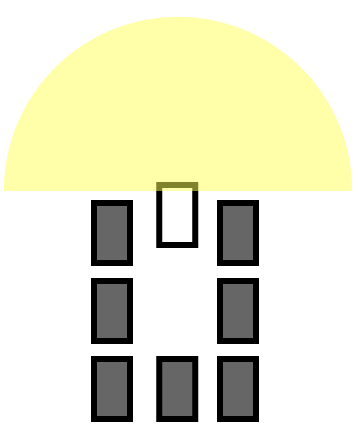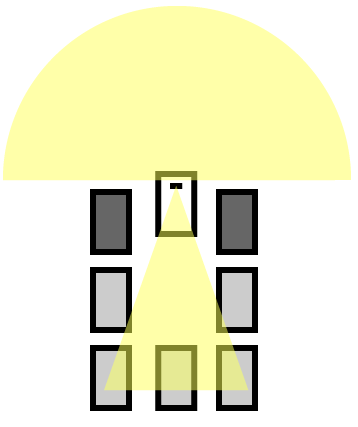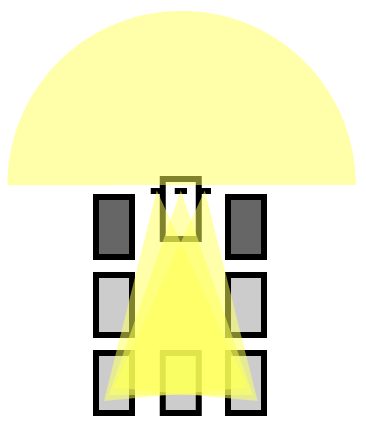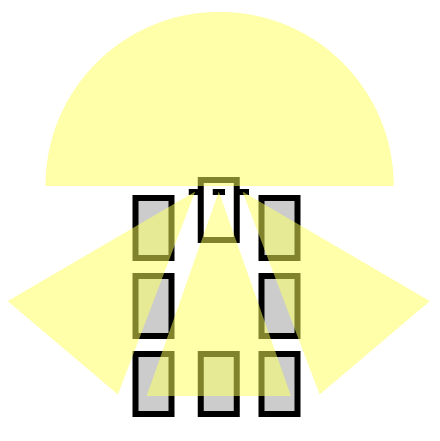I’m a fan of rear view mirrors. Before rear view mirrors were invented, the blind spot behind your car would have been half the world, the 180° that you can’t see with the back of your head. Before rear view mirrors, this was all you could see:

But even with rear view mirrors, there are some parts of the world behind you that you can’t see, your blind spots. I want to show you how you can get rid of your blind spots.
Here is what you can and can’t see with one central rear view mirror:

For some reason, I think most people position their side rear view mirrors so that they can see the car that’s directly behind them, like this:

Maybe it’s because they think they want to see “what’s behind them”, or maybe it’s because they came positioned like that, or maybe it’s because someone told them to position them like that. Who knows. I used to do it that way too. But no more. When you do this, your blind spot stays almost just as big as it was before, with one mirror. And if you think about it, why would we want to do this? Why would you want to see the car that’s directly behind you in three different mirrors when you could be pointing these mirrors at three different areas behind you? If you can see the side of your own car in your side mirrors or if you can see the car that’s directly behind you in your side mirrors, then there is some redundant overlap between your center mirror and your side mirrors.
This is how they should be positioned:

Notice that there’s no overlap at all and there aren’t any blind spots that are larger than a car, which means that you’ll always be able to see any car that’s behind you. You might not be able to see the whole car, but at least you’ll see some of it.
Here’s how to set it up:
- Find a quiet street and stop alongside some parked cars.
- Position your central mirror so that you can see what’s directly behind you.
- Pick out a particular car behind you and keep an eye on it in your central mirror.
- Go in reverse toward that car and when you start to lose sight of that car in the central mirror, make sure that you can see it in your side mirror.
- Keep an eye on that car in your side mirror and when you start to lose sight of it in your side mirror, make sure that you can see it out of the corner of your eye in your peripheral vision.
That’s it! Now you and I can stop complaining about our blind spots.
Here’s a video I made of the instructions:

 Tweet
Tweet